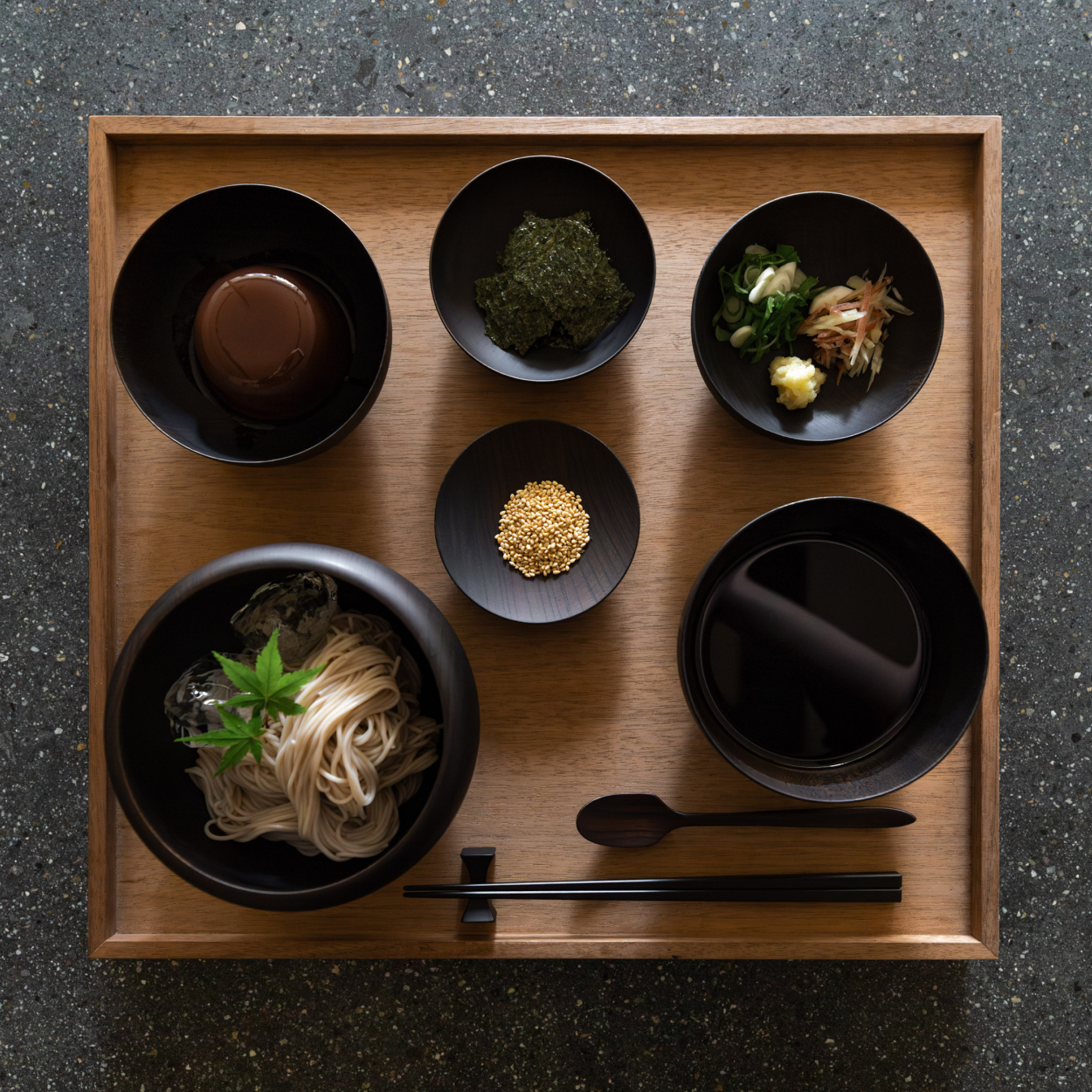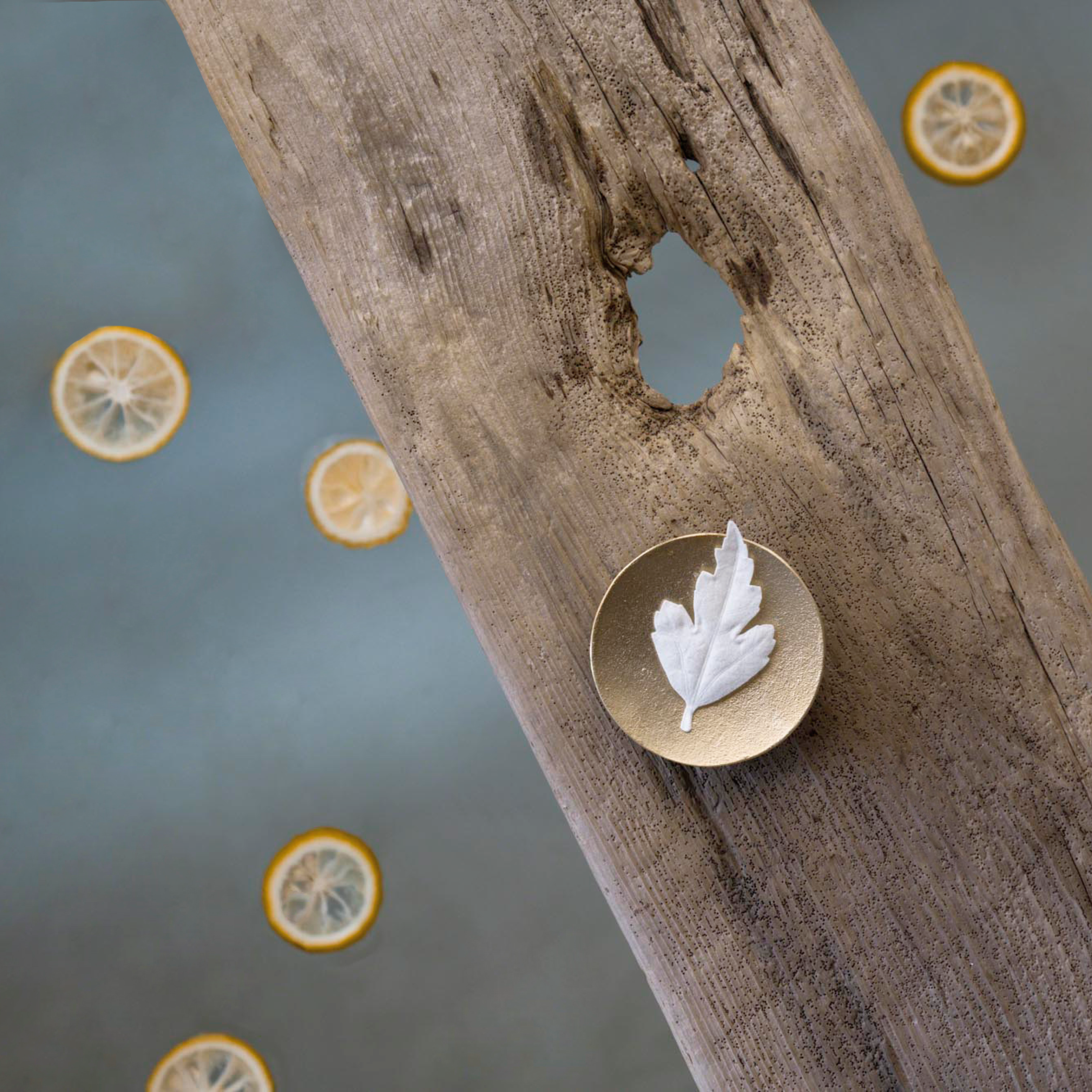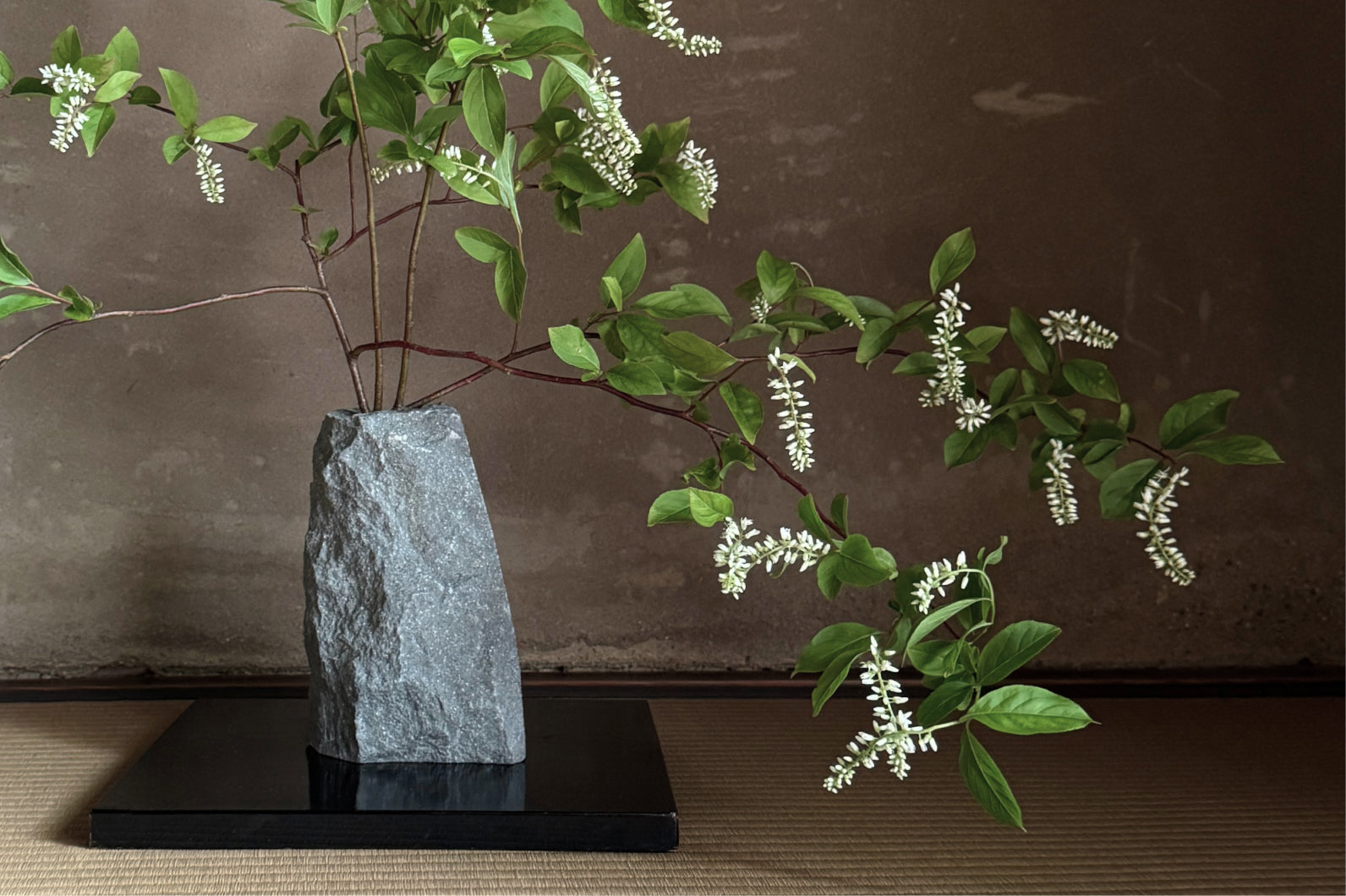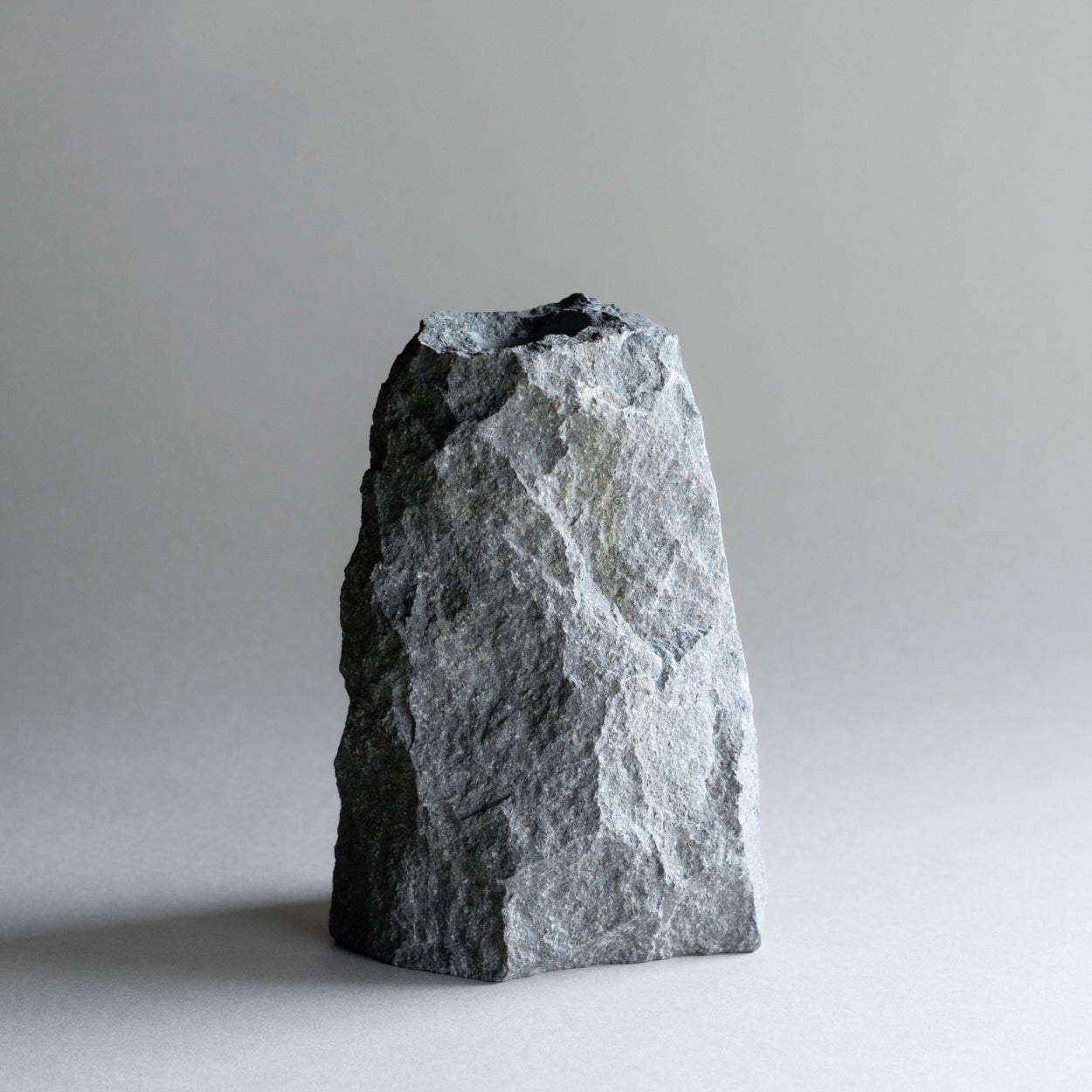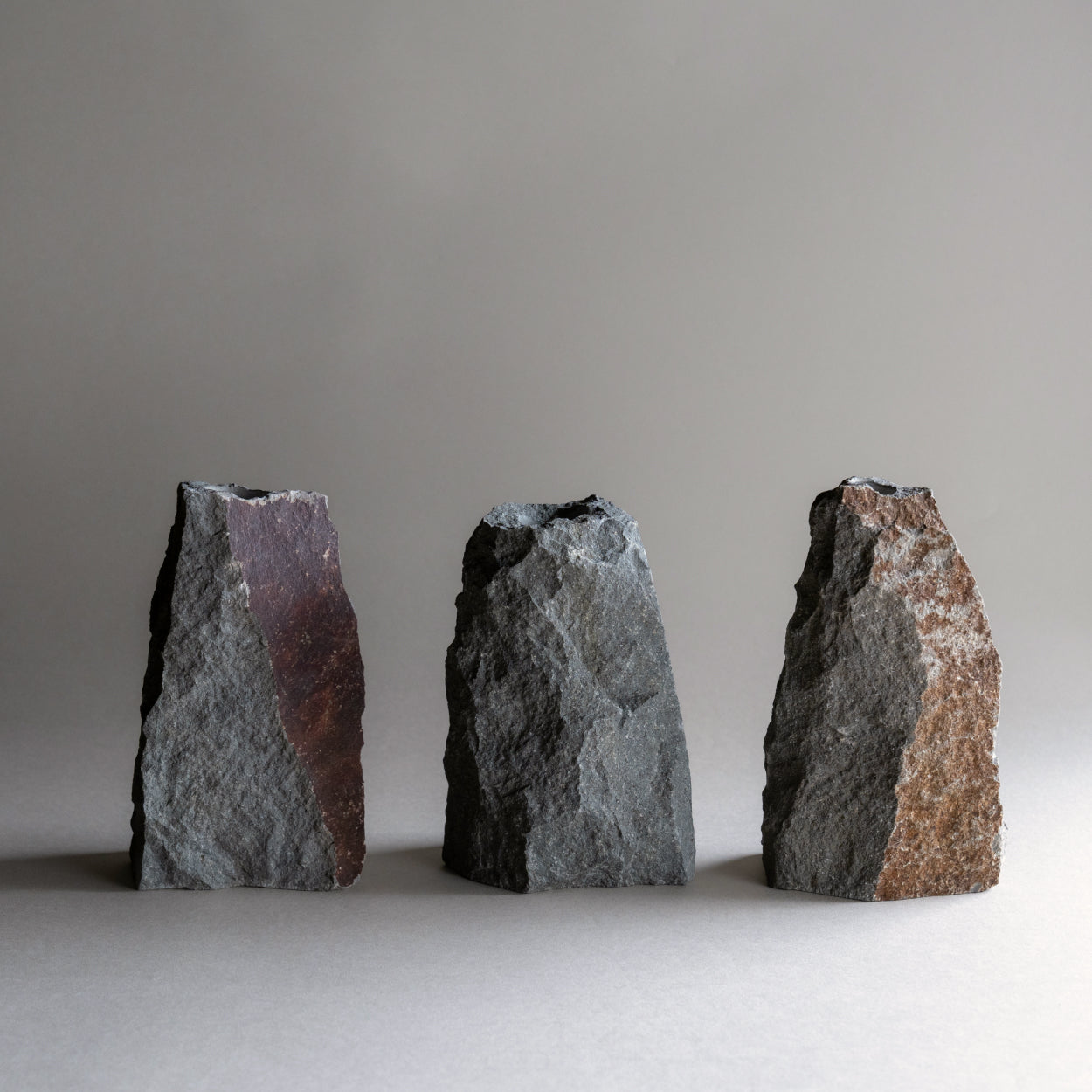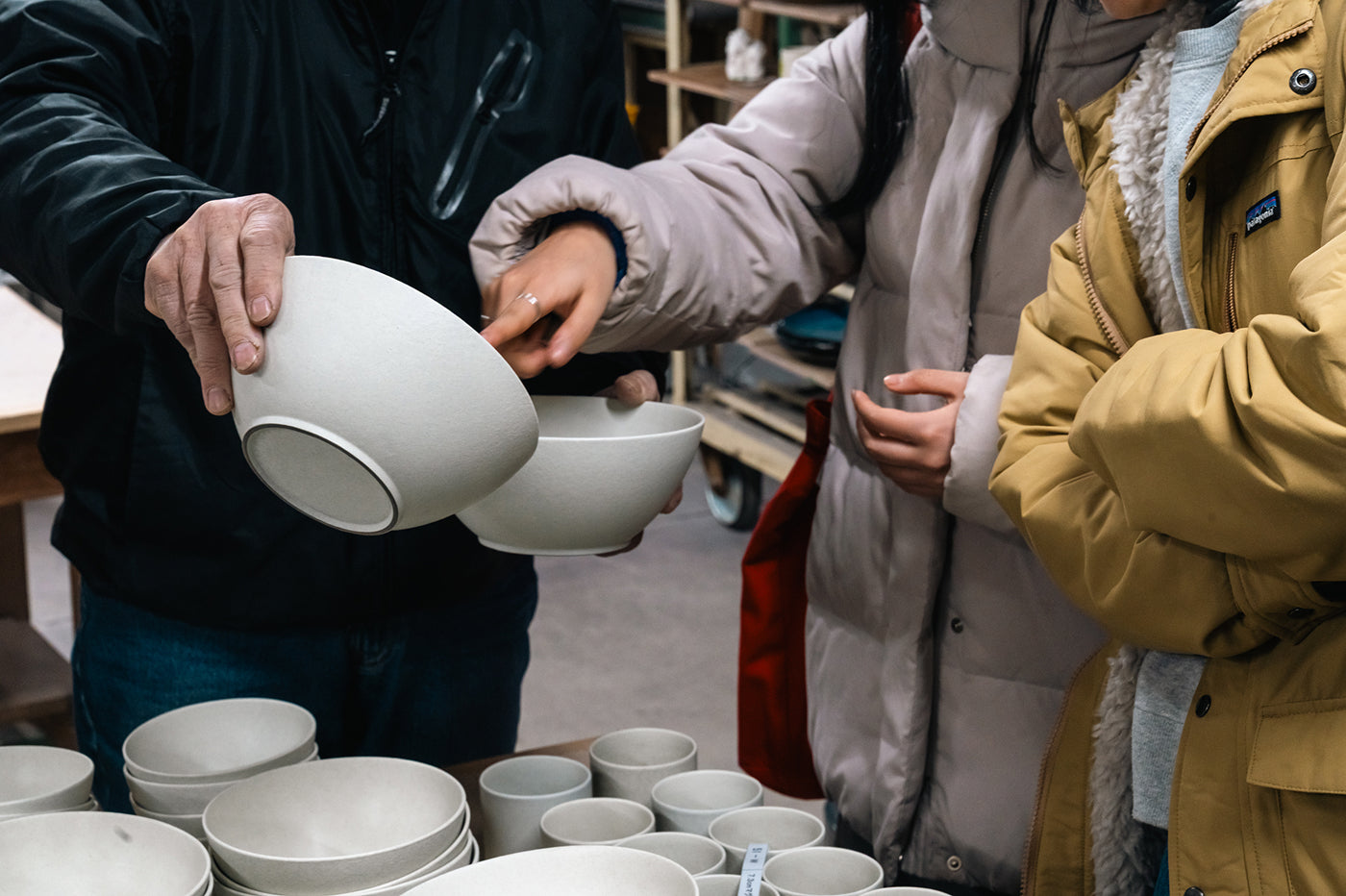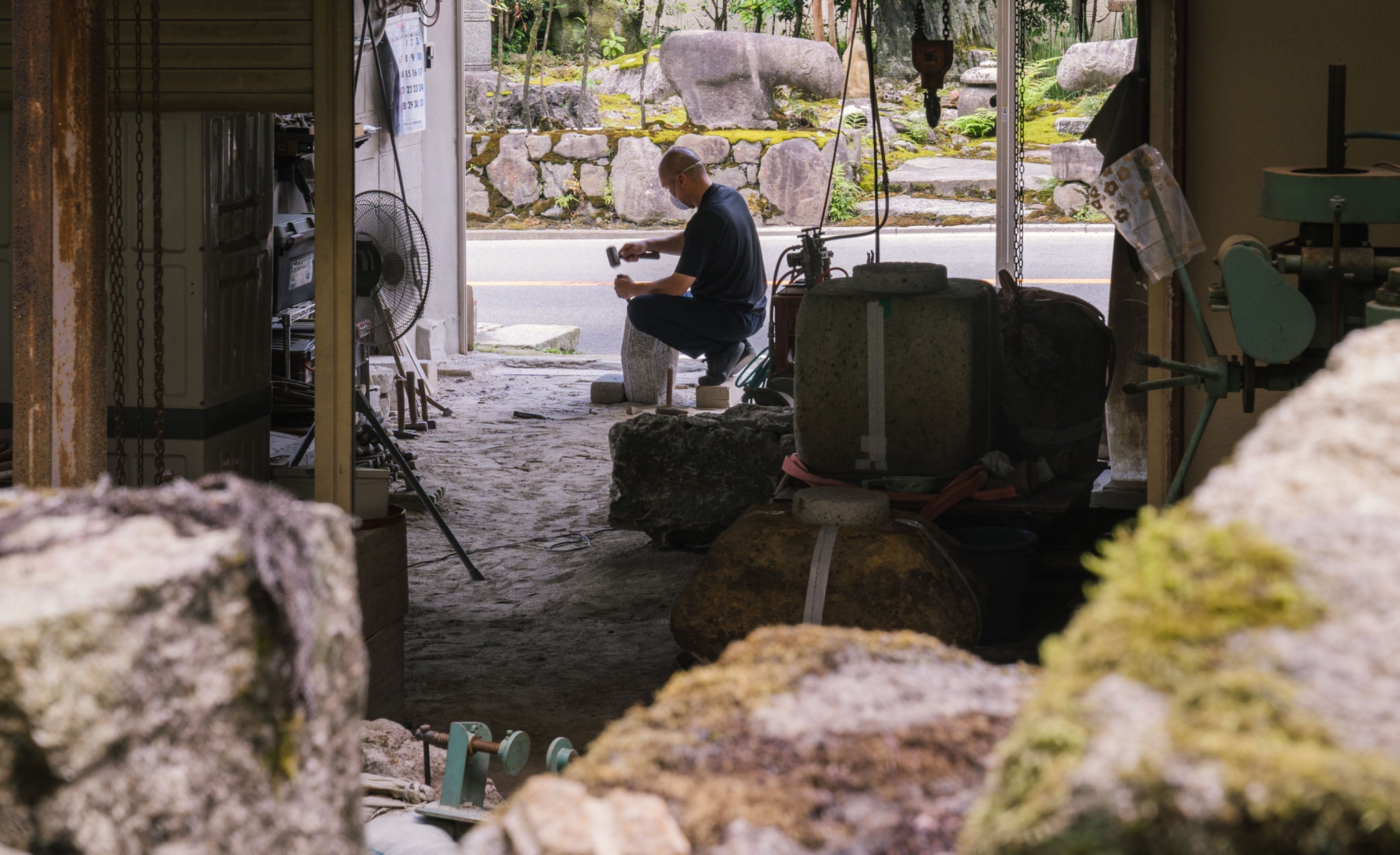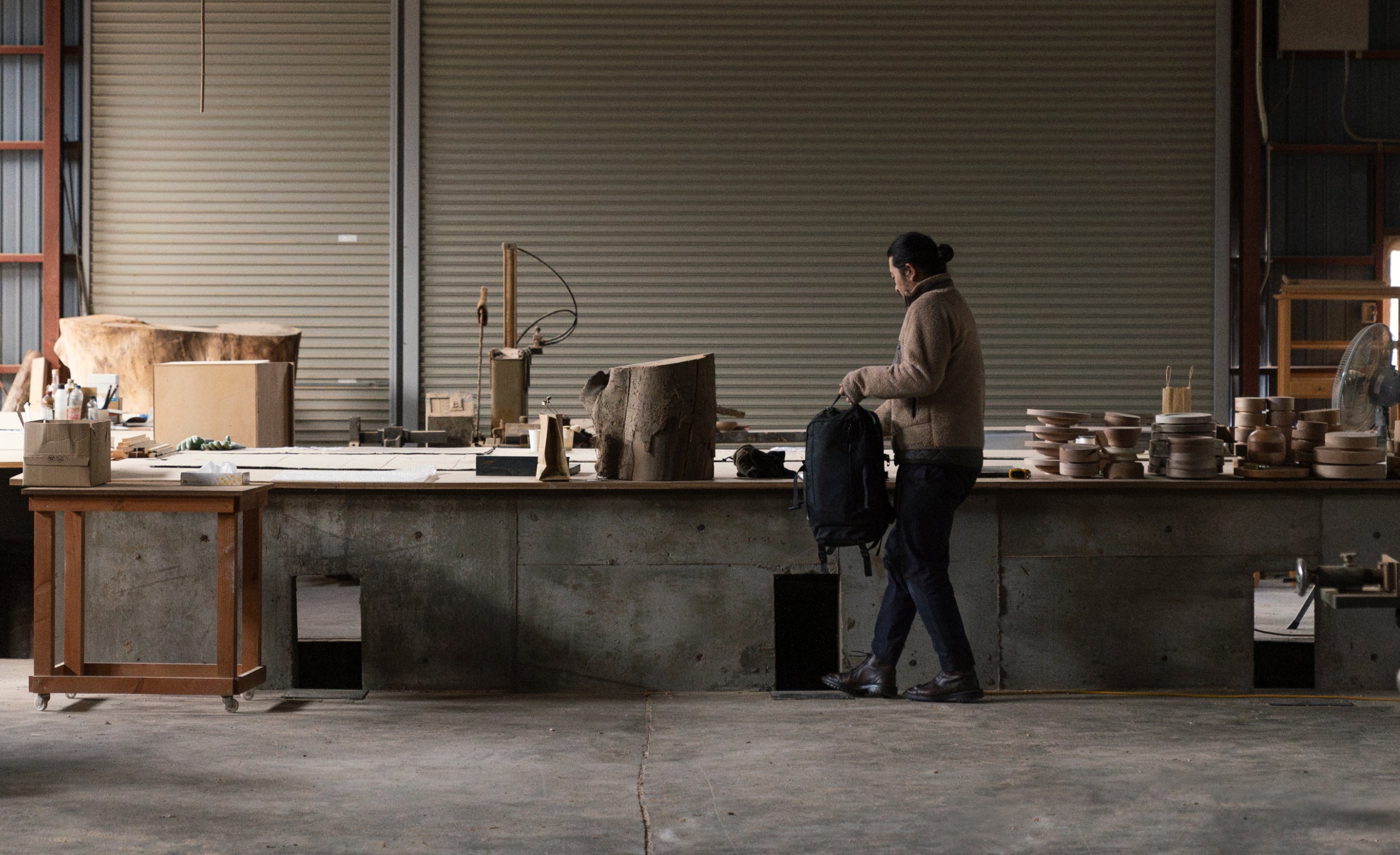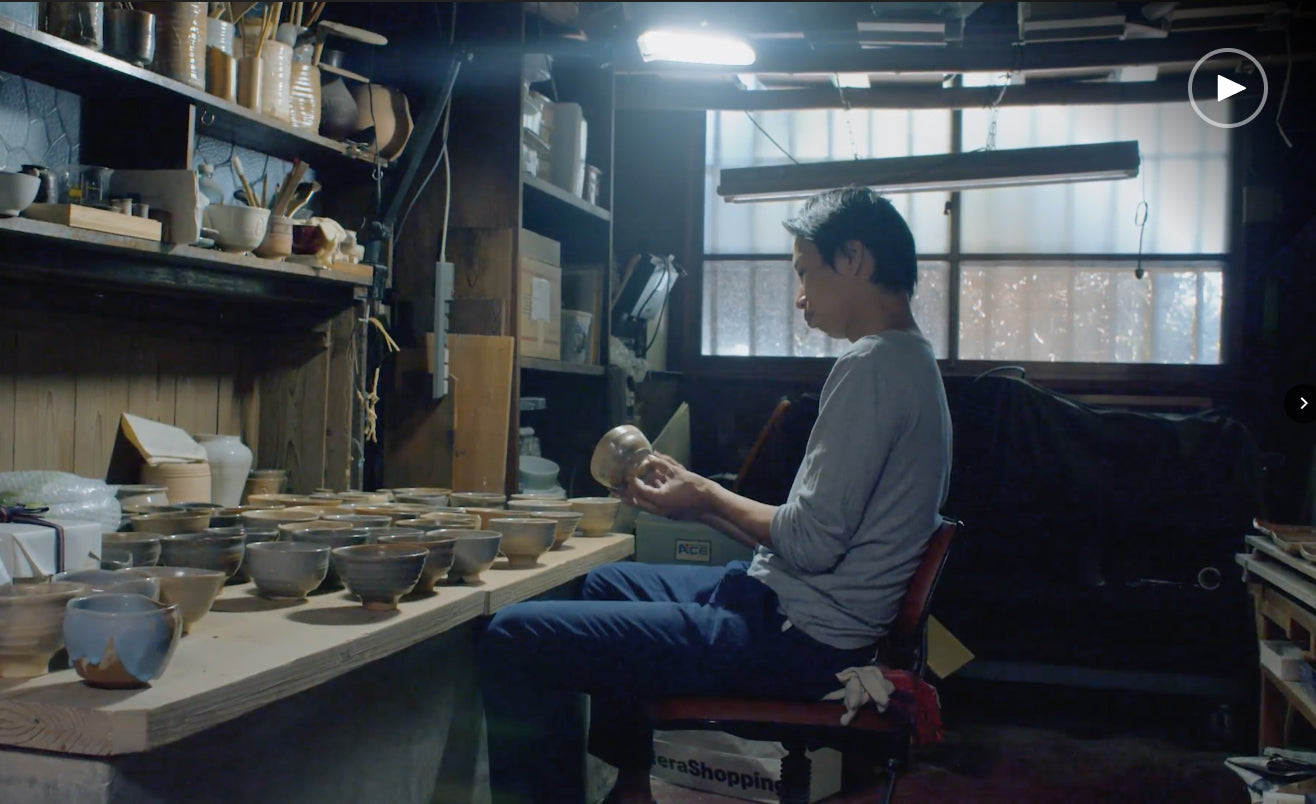Hon-komatsu stone has an illustrious pedigree: it has been used for the graves of emperors and the walls of castles. It can be found in zen gardens and contemporary homes. It is the preference of those who appreciate its unique texture and multi-colored patina.
It comes from a single hardened lava flow that’s 400,000 years old. Sourced in just one town in all of Japan — Manazuru Town in Kanagawa Prefecture — it is considered one of Japan’s finest stones. It’s also a dwindling resource.
Because of its scarcity and its status as a prized stone, it becomes all the more important to make use of every last piece.
Bringing Hon-Komatsu Back from the Grave
One of the more common applications of hon-komatsu stone is in the making of headstones. The founder of TOU married into a family that makes headstones, and saw a way to contribute his efforts to try and minimize waste of this non-renewable material.
Making headstones results in large chunks of off-cuttings that TOU repurposes into smaller but distinctive decor objects, like vases and trays. The stonemasonry techniques used are purposefully free-form so that the stone’s shape can emerge organically.
The sculptor doesn’t approach an initial block of stone with an image of the final outcome in his head. Instead, he reacts to the form the stone seems to want to take.
The Wabi-Sabi of Stone
One of the trademark features of hon-komatsu is the rust-colored surfaces that occur naturally.
Depending on how the stone was exposed to the elements, some faces will have rich brown-reds that contrast nicely with the blue-greys of the interior stone. This dynamism is part of what makes the stone such a high-grade choice. It also gives the stone a distinctive character.
Between the variant colorations and textured forms, the resulting stone pieces have a distinctive wabi-sabi character. No two are alike, and the credit for the character of the piece is almost entirely down to the material’s intrinsic properties — the sculptor’s role is to allow the stone to express itself.
The aim isn’t to standardize, but celebrate the unique character that makes this type of stone so refined.
Selecting a hon-komatsu piece comes down to trusting your instinct. By evaluating the options with an open heart and clear mind, you will be able to identify the forms that resonate the most with you, that you feel will fit just right in your space.
“Maybe it’s not a stone many would choose. Out of 100 people, 99 might pick something else. But if even one person thinks, “This is the one,” I want them to treasure that feeling.”
